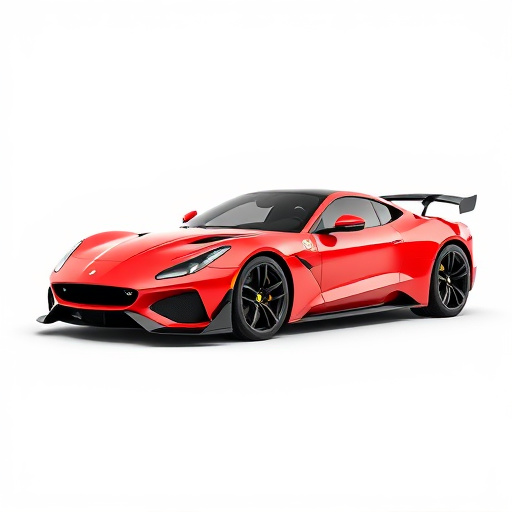The K&N vs Gexhaust’s Gexhaust’s aFe Power intake debate centers around contrasting performance philosophies: K&N prioritizes cost-effective, reusable filters for improved airflow and instant power gains, while aFe Power focuses on premium materials and specialized engineering for sustained, top-tier engine performance. Key differences lie in filter efficiency, longevity, and target applications, with K&N ideal for daily drivers and aFe Power suited for high-performance vehicles needing superior filtration.
“Uncover the intricacies of K&N vs aFe Power intake systems, two leading names in automotive filtration. This article delves into the core differences between these popular brands, focusing on design, materials, performance, and efficiency. While K&N and aFe Power both offer high-quality air filters, their unique approaches manifest in distinct performance characteristics. By comparing horsepower, torque output, filter longevity, and material choices, we’ll help you navigate the landscape of powerful intake systems.”
- K&N vs aFe Power Intake Design and Materials
- Performance Differences: Horsepower and Torque Output
- Filter Efficiency and Longevity Comparison
K&N vs aFe Power Intake Design and Materials

When comparing K&N and aFe Power intake designs, one key difference lies in their construction materials. K&N intakes are renowned for their reusable and washable air filters, typically constructed with synthetic media that can be cleaned and reused multiple times. This not only reduces waste but also offers long-term cost savings for vehicle owners. On the other hand, aFe Power takes a different approach by focusing on premium, high-flow filters made from carefully selected materials. Their intakes often incorporate reusable elements as well, but they prioritize performance and flow efficiency through specialized media blends and precision-engineered designs.
The K&N vs aFe Power debate often boils down to the balance between cost-effectiveness and performance. While K&N’s washable filters appeal to budget-conscious consumers, aFe Power’s high-end materials and engineering are favored by those seeking maximum airflow and engine performance gains. Each brand offers unique advantages, catering to different needs within the automotive aftermarket.
Performance Differences: Horsepower and Torque Output

When comparing filter technologies like K&N and aFe Power intakes, one key area to consider is performance differences, particularly in horsepower and torque output. These two brands offer distinct approaches to air intake systems, which can have noticeable impacts on engine performance. K&N, known for its high-flow air filters, focuses on maximizing airflow to the engine. Their filters are designed with a larger surface area and less restriction, allowing for increased breathability and potential horsepower gains. On the other hand, aFe Power takes a more sophisticated route by incorporating advanced materials and designs in their intakes. They prioritize not only airflow but also efficient air distribution, which can result in improved torque output and overall engine responsiveness.
The K&N intake’s simplicity and direct approach often lead to instant thrust and improved throttle response, making it a favorite among performance enthusiasts seeking immediate power increases. Conversely, aFe Power intakes are renowned for their ability to deliver sustained power throughout the RPM range, providing a smoother and more refined driving experience. This difference in focus highlights the varied strategies these brands employ to enhance engine performance, catering to different driver preferences and applications.
Filter Efficiency and Longevity Comparison

When comparing K&N and aFe Power intake systems, one key area to consider is filter efficiency and longevity. Both brands offer high-performance filters, but their designs and materials differ significantly. K&N filters are known for their reusable and washable construction, which can extend their lifespan compared to disposables. This not only reduces replacement costs but also minimizes waste. On the other hand, aFe Power filters often utilize more exotic materials and tighter weave fabrics, resulting in exceptional filtration efficiency—often capturing smaller particles that K&N filters might not. While this may require more frequent replacements, it ensures a consistently clean air flow, which can be crucial for optimal engine performance.
The longevity debate between K&N and aFe Power hinges on usage scenarios. For daily drivers or those with milder driving conditions, K&N’s washable design can provide cost-effective and long-lasting solutions. However, for extreme off-road vehicles or high-performance cars pushed to their limits, aFe Power’s specialized filters might offer the edge in filtration capabilities, albeit at a higher upfront cost.
When comparing K&N and aFe Power intakes, understanding their distinct designs, materials, and performance characteristics is key. While both offer high-quality air filtration, K&N’s synthetic media provides superior flow and efficiency, translating to slightly higher horsepower and torque gains. aFe Power, on the other hand, excels in construction quality and durability, ensuring longevity. Ultimately, the choice between them depends on individual preferences and specific vehicle needs, with both options delivering notable performance improvements over stock intakes.














